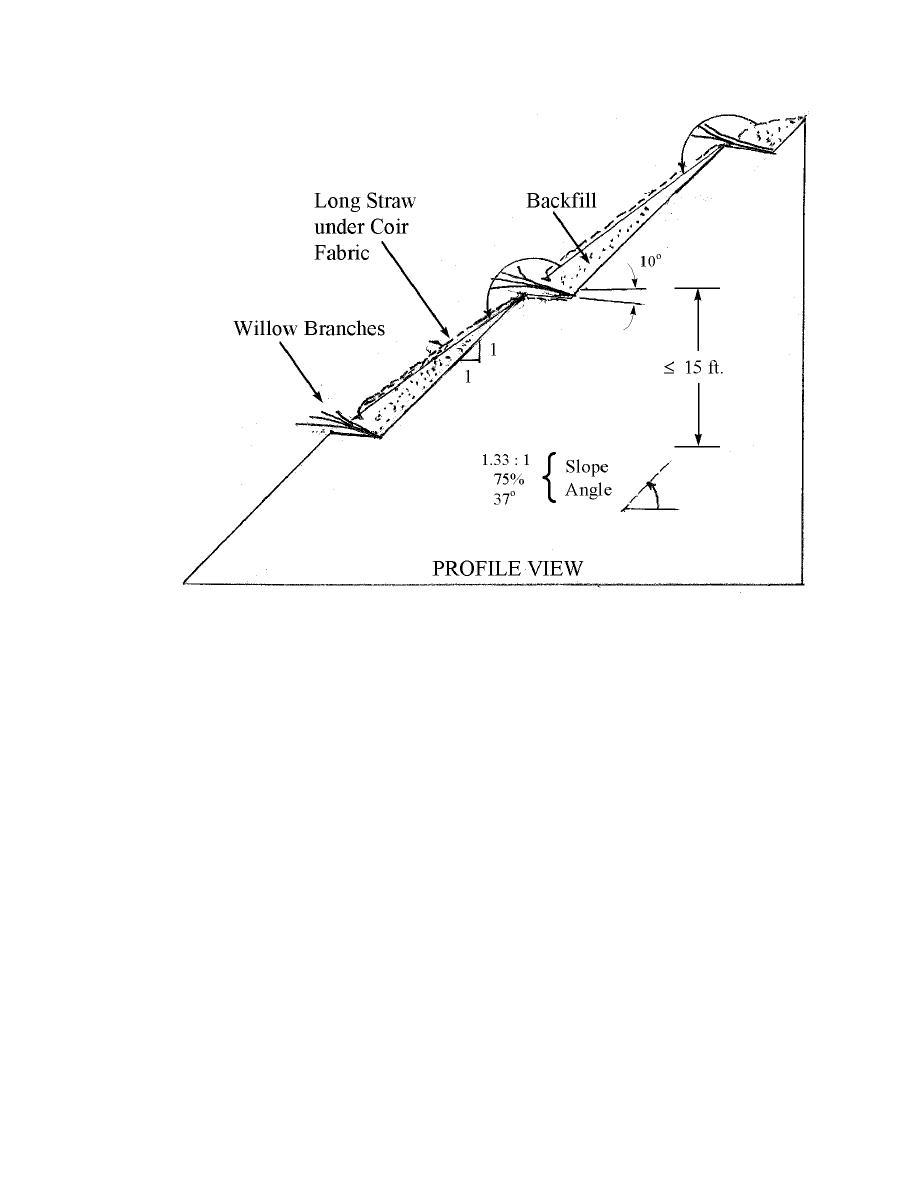
|
|

|
||
 Appendix B: Bioengineering for Streambank Erosion Control -- Guidelines
Figure 41. Brush layering with coir woven fabric and long straw under fabric.
Coir fabric and straw help control rillying and gullying between layers.
(Adapted from Gray and Leiser, 1982)
slope. In a reinforced earth revetment it is common practice to make the strip length (or
width of reinforced volume ) about one-third the slope height (Gray and Leiser, 1982).
Brush layering lends itself to partial mechanization because the benches can be excavated
with a small backhoe or grader. Regular construction equipment, such as a front-end loader
with a clasp on the bucket, can be used for hauling and placing the brush. Backhoes or similar
equipment can also backfill.
The choice between wattling and brush layering, according to Gray and Leiser (1982),
should be based on economics, the potential stability of the fill (in this case, stability of the
streambank), and the availability of suitable plant materials. Generally speaking, brush
layering is considered to be less expensive than contour wattling. Brush layering stabilizes
a fill or bank to greater depths, but more plant material is required than for contour wattling.
However, if the streambank is disturbed to the extent that rebuilding and reshaping is
necessary, brush layering may be the better alternative, because of its ability to stabilize a bank
to greater depths.
B-65
|
||
 |
||